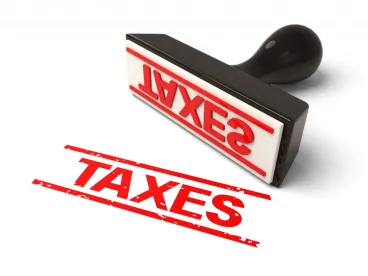Summary
The newly enacted version of section 163(j) limits deductions for business interest expense. Although the prior version of section 163(j) applied almost exclusively to US corporations with non-US parents, the new version of section 163(j) applies to taxpayers engaged in business in any form, with only very limited exceptions.
In Depth
The newly enacted version of section 163(j) limits deductions for business interest expense. In general, it limits a taxpayer’s interest expense deductions for a taxable year to the sum of 30 percent of adjusted taxable income (ATI) and its business interest income. Certain taxpayers involved in the sale of motor vehicles may also be able to increase their section 163(j) limitation by any floor plan financing interest expense. Although the interest expense limitation of prior section 163(j) applied only to certain corporate taxpayers, new section 163(j) applies to all taxpayers, including partnerships and their partners.
The Limitation
In general, ATI is defined in a manner similar to earnings before interest, taxes, depreciation and amortization (EBITDA). As a result, ATI excludes income and deduction items not related to a trade or business and business interest income. It also excludes any net operating loss deduction that could offset taxable income and any deduction allowed under new section 199A for non-corporate taxpayers. Although ATI currently excludes deductions for depreciation, amortization and depletion, this exclusion lapses with respect to taxable years beginning on or after January 1, 2022. In essence, this means that, for taxable years beginning on or after January 1, 2022, ATI will be defined in a manner similar to earnings before interest and taxes (EBIT).
Business interest income means the amount of interest income includible in gross income of the taxpayer properly allocable to a trade or business. The definition of business interest income specifically excludes investment income within the meaning of section 163(d). Whether this means that entities holding investments in the form of stock or interests in partnerships must allocate interest expense between investment and non-investment assets in every instance is not clear. However, the Tax Cuts and Jobs Act Conference Report indicates that corporations generally do not have investment income or investment interest within the meaning of section 163(d).
Any interest expense disallowed by section 163(j) in one taxable year may be carried forward indefinitely.
Exceptions to the Application of Section 163(j)
Taxpayers with average gross receipts of less than $25 million over the preceding three taxable years are generally excluded from the application of section 163(j). In addition, certain trades or businesses are excluded from the section 163(j) interest limitation. Specifically, interest expense from a variety of utility services is excluded from the scope of section 163(j), including the furnishing or sale of electrical energy, water or sewage disposal services. In addition, interest expense from certain gas or steam distribution and transportation is excluded. Certain real property and farming businesses can also elect to have their businesses excluded from the application of the section 163(j) limitation. Whether making such an election is the better choice will depend on a variety of factors.
Carryforwards and Treatment as an Attribute
Interest expense disallowed as a result of the application of section 163(j) can be carried forward indefinitely. In addition, carryforwards are treated as attributes that may be transferred from a target corporation to an acquiring corporation in certain corporate reorganizations and liquidations. Similarly, section 382 may apply to limit the use of interest deduction carryforwards if the corporation experiences an ownership change. Even if the corporation has not previously had net operating losses or other attributes that caused it to be treated as a loss corporation for purposes of section 382, having interest expense carried forward as a result of the application of section 163(j) alone will cause the corporation to be treated as a loss corporation within the meaning of section 382.
Partnership Aspects
Close to half of new section 163(j) deals with rules specific to the interest expense of partnerships. This level of detail results primarily from the complexity borne from Congress’ decision to treat partnerships as separate entities for certain aspects of section 163(j) and as aggregates of their partners for others. The section 163(j) limitation is generally calculated in the first instance at the partnership level. However, most of the remaining aspects of section 163(j) apply at the partner level.
For example, carryforwards of disallowed business interest expense are generally calculated at the partner level. A partnership’s “excess business interest” and “excess taxable income” are both allocated among the partners in the same manner as the partnership’s non-separately stated taxable income or loss. “Excess taxable income” is defined as the excess (if any) of 30 percent of the partnership’s ATI over the partnership’s business interest expense, grossed up to take into account that it is measured based on 30 percent of ATI. Additional adjustments to excess taxable income are made to take into account the extent to which partnership business interest expense is allowed as floor plan financing interest or to offset partnership business interest income. Congress adopted this partner-level carryforward mechanism to take into account the fact that partners’ relative interests in their partnerships are not necessarily fixed from year to year.
In general, a partner’s share of the partnership’s section 163(j) interest expense limitation is calculated at the partnership level without respect to the partner’s own ATI or interest expense. Similarly, the partnership’s business interest expense and ATI generally have no impact on the partner’s non-partnership business interest expense limitation. A partner’s share of allowed business interest expense is not further limited by a partner-level section 163(j) limitation. However, a partner’s share of disallowed business interest expense cannot become allowable at the partner level even if the partner has excess ATI. The one exception to this entity-level treatment is that a partner’s share of “excess taxable income” can be used to increase the partner’s section 163(j) limitation on non-partnership business interest expense once no “excess business interest” remains.
Partners must adjust the basis in their partnership interests to account for various aspects of the application of section 163(j). Specifically, a partner must reduce its basis in the partnership for “excess business interest” (but not to less than zero), even though the interest expense is disallowed. However, this basis reduction will be subsequently reversed to the extent “excess business interest” is not used under the carryforward rules before the partner sells or exchanges its partnership interest in either a taxable or tax-free transaction. To the extent the basis reduction is reversed, neither the transferor nor the transferee will be permitted to utilize the “excess business interest” that resulted in the initial basis reduction. A partner that has had its basis in a partnership reduced as a result of the operation of section 163(j) will need to be cautious regarding certain transactions that can ordinarily flow from a partner not having basis in its partnership interest. For instance, the partner could find itself unable to take into account its distributive share of partnership losses or recognize gain as a result of a distribution from the partnership in excess of basis.
Section 163(j) includes a statement that rules similar to certain of the partnership-specific rules should apply to S corporations and their shareholders, but guidance will be needed to explain how such rules would work in the context of S corporations.
Consolidated Return Aspects
Whether section 163(j) applies to interest expense of a consolidated group as a whole or to each of its members separately is not clearly addressed by the statute. However, the legislative history suggests that it is generally intended to apply to a consolidated group as a whole. Guidance will nevertheless be needed to address a number of issues regarding the application of section 163(j) to consolidated groups. For instance, determining whether and how interest expense carryforwards from deductions disallowed by section 163(j) are apportioned to a departing consolidated return member is not clearly addressed by the statute or the legislative history. In addition, determining precisely how to apply section 163(j) when some of the members of the group are engaged in a trade or business to which the section 163(j) limitation does not apply will require further guidance.
Subpart F Aspects
Although section 163(j) applies to taxpayers, whether a controlled foreign corporation (CFC) is an entity to which the limitation applies is not clearly addressed by the statute. If section 163(j) applies to a CFC, it could be relevant to calculate a CFC’s tested income under section 951A relating to global intangible low taxed income, or GILTI.
Interaction with the BEAT
While the section 163(j) limitation applies to both third party and certain related party interest expense, the Base Erosion and Anti-Abuse Tax (the BEAT) can also apply to impose additional US federal income tax liability with respect to certain related party interest expense. The section 163(j) limitation is treated as applying to third party interest first. However, the BEAT can then apply with respect to all otherwise allowed related party interest expense treated as a base erosion payment for purposes of the BEAT.





 />i
/>i
